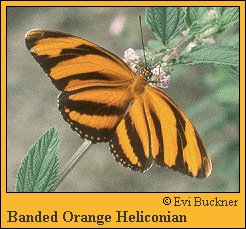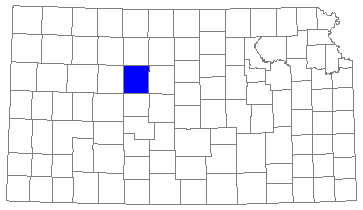 |
 

 |



Banded Orange Heliconian (Dryadula phaetusa Linnaeus)
Wing span: 3 3/8 - 3 1/2 inches (8.6 - 8.9 cm).
Identification: Male upperside bright orange with heavy black stripes; female duller with blurred black stripes.
Life history: Eggs are laid singly on stems and leaves of host plants. Caterpillars chew slots into the leaves. Adults roost in small groups on grass.
Flight: July and December in Texas, all year in the tropics.
Caterpillar hosts: Various species of passion-vine (Passiflora and Tetrastylis).
Adult food: Flower nectar and bird droppings.
Habitat: Lowland tropical fields and open areas.
Range: Brazil north through Central America to central Mexico. Rare vagrant to Kansas and Texas.
Conservation: Not necessary for rare stray.
The Nature Conservancy Global Rank: G5 - Demonstrably secure globally, though it may be quite rare in parts of its range, especially at the periphery.
Management needs: None reported.
References:
Opler, P. A. and V. Malikul. 1992. A field guide to eastern butterflies. Peterson
field guide #4. Houghton-Mifflin Co., Boston. 396 pages, 48 color plates.
Scott, J. A. 1986. The butterflies of North America. Stanford University Press,
Stanford, Calif. 583 pages, 64 color plates.
Author: Jane M. Struttmann
State and Regional References:
Ely, C., Schwilling, M.D., and M.E. Rolfs. 1986. An Annotated List of the
Butterflies of Kansas. Fort Hays Studies (Science) 7, Fort Hays State
University, Fort Hays, Kans.
Opler, Paul A. 1999. Peterson Field Guide to Western Butterflies, revised
edition. Houghton Mifflin Co., Boston, Mass.
Stanford, R.E. and P.A. Opler. 1993. Atlas of Western USA Butterflies.
Privately published, Denver, Colo.
Tilden, J.W. and A.C. Smith. 1986. A Field Guide to Western Butterflies.
Houghton Mifflin Co., Boston, Mass.

